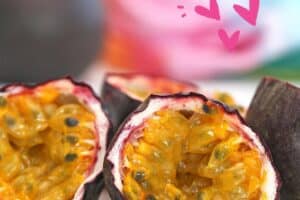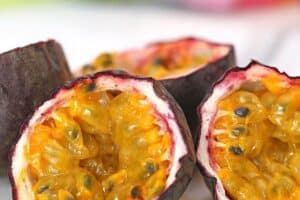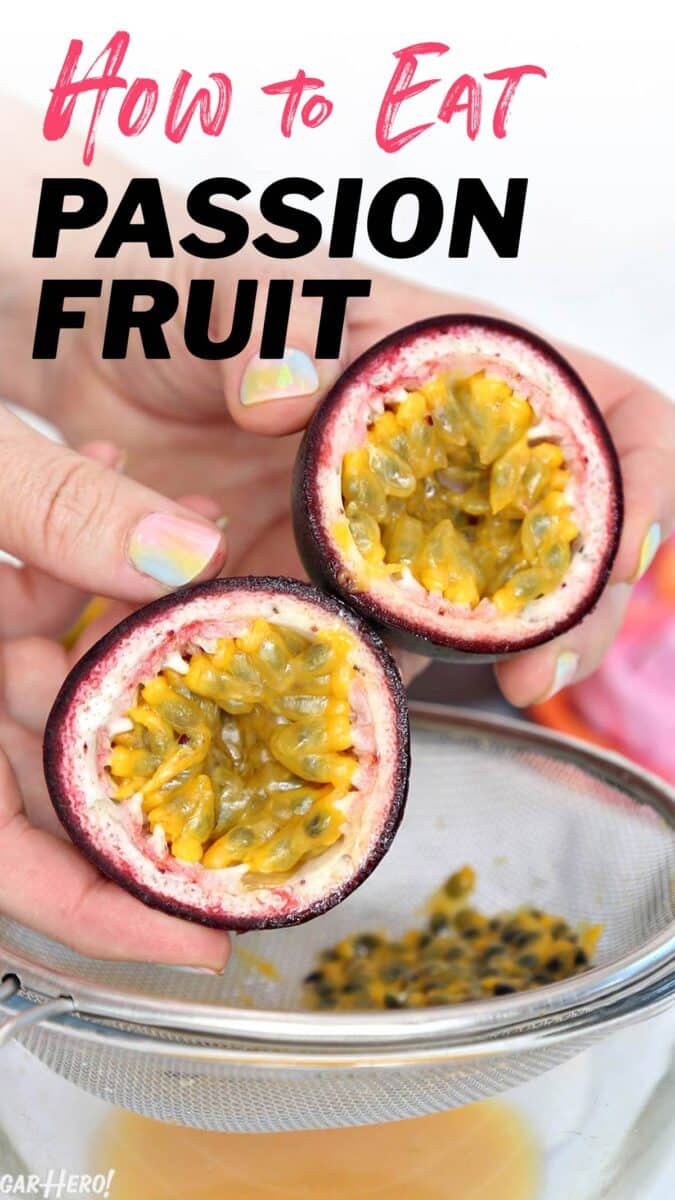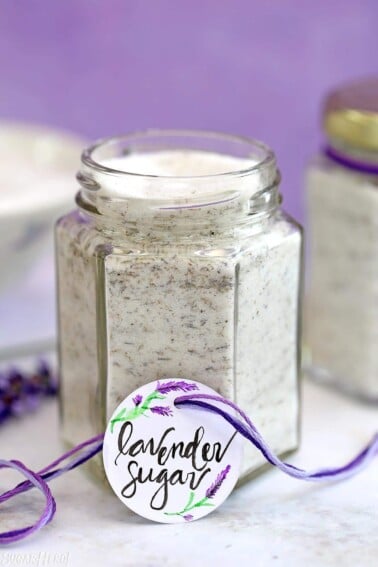Passion fruit is a vibrant and versatile tropical fruit. Its sweet-and-sour flavor makes it shine in both savory and dessert recipes, and it’s also excellent on its own. Learn how to make the most of this delicious fruit with this guide to choosing, storing, and eating passion fruit.

Table of Contents
What is passion fruit?
Passion fruit is a fruit that grows on flowering vines in tropical and subtropical climates. There are several varieties, including a yellow type native to Brazil, and a deep purple type more commonly found in the United States. The yellow variety is about the size of a citrus fruit and more sour, while the purple variety is closer to the size of an egg, and has a sweeter, more floral flavor.
Passion fruits look unremarkable on the outside, with their wrinkled, pockmarked skin and dusty coloring. But inside the thick outer skin is a surprising goldmine: bright yellow sacks bursting with pulpy juice and crunchy black seeds. This passion fruit pulp can be eaten plain right out of the fruit, or used in juices, cooking, and baking recipes.

Where to buy passion fruit
Depending on your location, tracking down fresh passion fruit can be extremely easy, or frustratingly difficult. If you are blessed with abundant local passion fruit, you are very lucky (and I am very jealous!) For the rest of us, it might take a bit of sleuthing to find a good source.
To find fresh passion fruit, try large Latin or Caribbean markets if there are any in your area. Specialty and upscale grocers like Whole Foods and Sprouts are also a good place to start. (When I lived in California, I would usually find it at Mexican markets, and now that I’m in Utah, I buy mine at Harmon’s grocery store.)
If you can’t find it fresh, you can also check the freezer section of Mexican markets — Goya brand makes a frozen passion fruit puree that I use all the time and highly recommend. Also check the freezer section of large Asian markets — you can sometimes find frozen bags of whole passion fruit there.

How to pick ripe passion fruit
Let’s say you’ve tracked down a source for fresh passion fruit. You may find yourself standing over a pile of wrinkled, dark brownish purple fruit, wondering which ones to pick. How can you tell if passion fruit is ripe and ready to eat?
My #1 tip to picking the best passion fruit is to look for fruit that is heavy for its size–weight is the best indicator of ripeness. Heavy fruits contain the most juice, while light fruits are more likely to be underripe or dried out inside. You can also look for:
- Feeling: shake the fruit — if you can feel or hear liquid moving around inside, that’s a good indication there’s a lot of juice and pulp inside.
- Color: look for fruit with the deepest colors — passion fruit can be purple, red, or yellow, and the darker the color, the riper the fruit.
- Wrinkles: This may seem counterintuitive, but look for wrinkled fruit as a sign of ripeness. This is the rare time you’ll want to find wrinkles!
- Avoid: fruit that is noticeably lighter in weight, very hard, or very shriveled.

What does passion fruit taste like?
Passion fruit has a tangy, sweet-and-sour taste, with hints of floral, tropical flavors like mango and guava. Because it is both sweet and sour, it can be used in savory recipes, like sauces, and paired with fish, chicken, and pork.
It is also incredible in dessert recipes. I love to swap it in for recipes where lemon or lime is the predominant flavor (think key lime pie or lemon bars) — because it provides the same bracing acidity, but the tropical sweetness mellows the edges and makes the flavor more complex. Similarly, it’s a great addition to mixed drinks or nonalcoholic juices, either in place of or in addition to other citrus fruit.
Are passion fruit seeds edible?
YES! Everything inside the passion fruit is edible, even the crunchy black seeds. They don’t have a significant flavor of their own, so they add texture but not much taste. They can also be removed by straining the pulp through a wire mesh strainer, if you prefer.
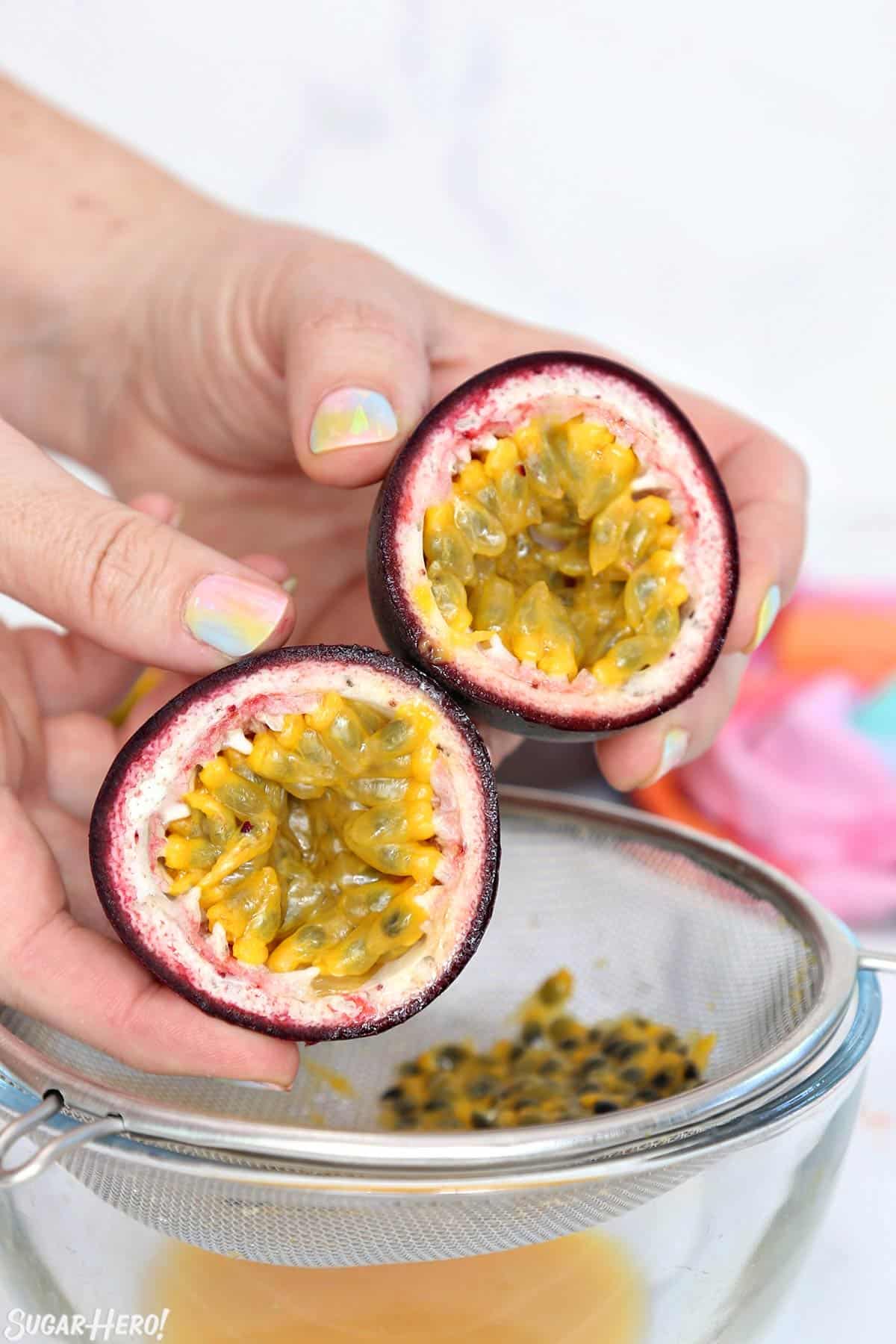
How to store passion fruit
Fresh passion fruit can be stored at room temperature for about a week, or in the refrigerator for 3-4 weeks. If you are storing your fruit in the refrigerator, place them in a plastic bag so they won’t lose moisture and dry out prematurely. Once passion fruit has been cut open, the fruit should be covered and stored in the refrigerator, and used within 2-3 days.
Passion fruit puree, like many other fresh fruit juices, has a limited shelf life of 3-4 days in the refrigerator before it starts to ferment.
Freezing passion fruit
Passion fruit freezes well — in fact, whole frozen passion fruit is a common sight at Asian markets! You don’t have to do any additional preparation to freeze your passion fruit — just put them in a bag and toss them in the freezer. Defrost them in the refrigerator overnight, or on the counter for a few hours, before using them.
You can also freeze passion fruit puree — just pour it into ice cube trays. Once fully frozen, pop out the cubes and keep them in a sealed bag or container in your freezer for up to 6 months.
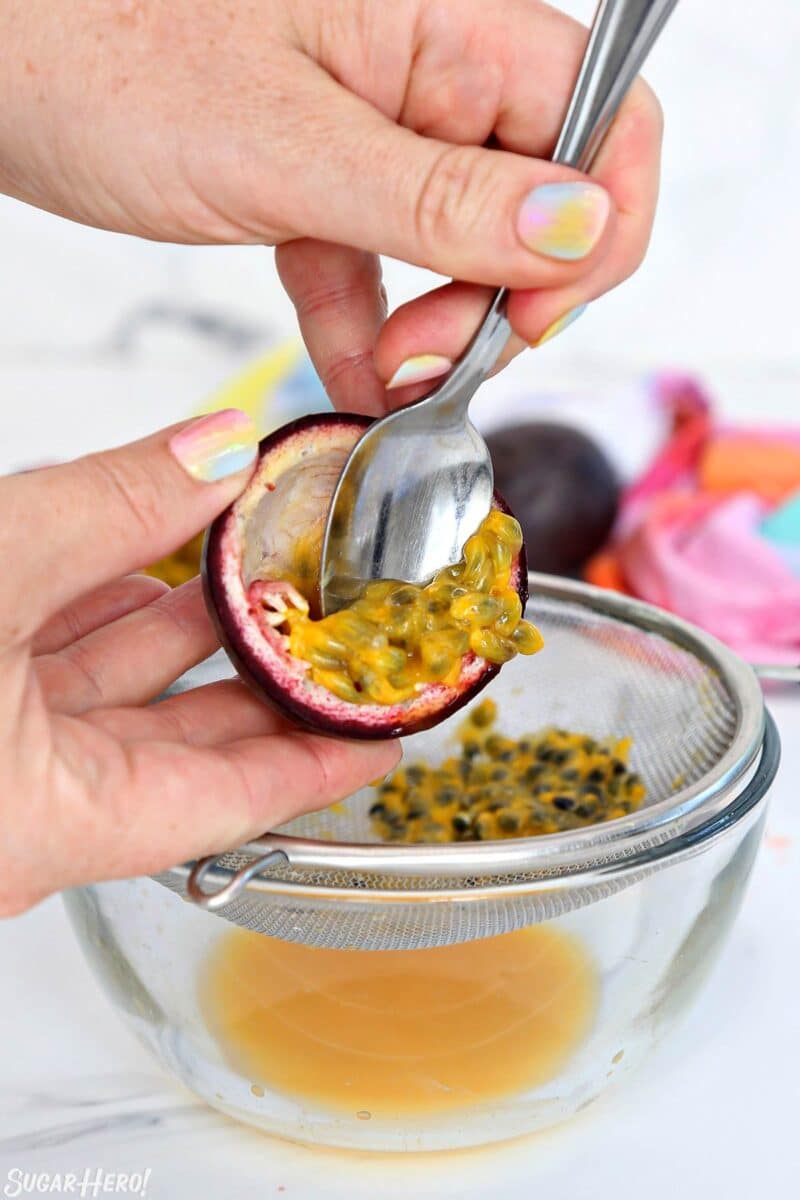
How to eat passion fruit
To enjoy raw passion fruit, all you need are a knife and a spoon! Cut the passion fruit in half, being careful to hold the halves together so the juice doesn’t spill out, then set both halves upright. Some people prefer to cut the top third off of a passion fruit, leaving the bottom intact, similar to removing the top of a soft-boiled egg.
Use a spoon to scoop out the juice and pulp, and enjoy! Avoid the white parts lining the inside of the peel, since it is bitter like citrus pith. You can chew the seeds, or swallow them whole.
How to juice passion fruit
To get juice the juice out of the fruit, scrape the insides of the fruit into a wire mesh strainer set over a bowl, and press down with a spoon to separate the seeds from the juice. You can also put the juice and seeds together in a blender, and pulse for 10-20 seconds to break up the seeds into smaller pieces, then strain out the seed pieces. This will typically yield more juice, and is faster if you’re working with lots of fruit.

Passion Fruit Recipes
In Drinks
One of the simplest, and best, ways to enjoy passion fruit is in drinks!
- In juice: mix it with other fruit juices to add a sour bite and tropical flair. One popular combination is passionfruit, orange, and guava juice (or “POG”), but it mixes well with many citrus flavors. Also try it in fruit smoothies!
- In mocktails: Combine passion fruit juice and tonic water for a simple mocktail, or get a little fancier and muddle it with mint leaves, then combine with lime juice, simple syrup, and sparkling water.
- In mixed drinks: swap the lime juice for passion fruit in a classic mojito recipe. Passion fruit also pairs well with ginger, so add a few ounces to ginger-heavy drinks like a moscow mule or dark and stormy!
Baking recipes
Once you’ve had your fill of eating it fresh and mixing it into drinks, try one of these fabulous passion fruit dessert recipes:

Passion Fruit Bars


